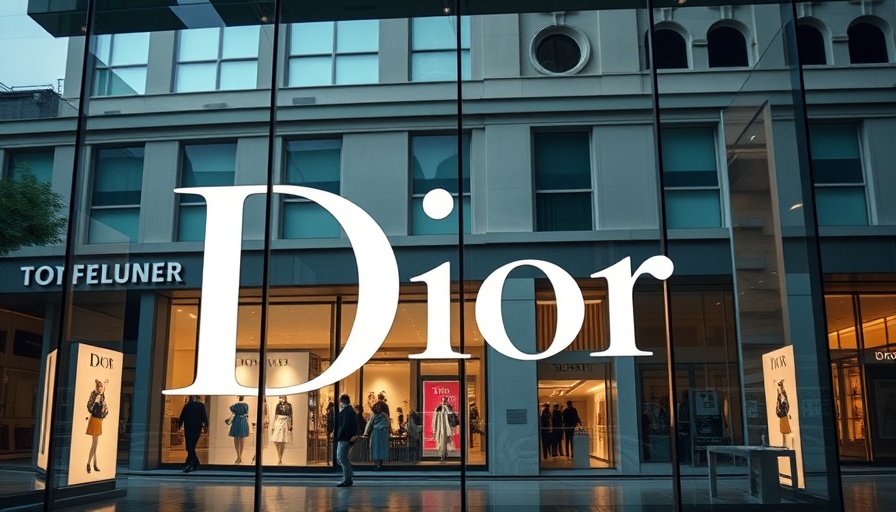
High-End Vulnerability: Understanding the Dior Data Breach
In a world where online shopping is at an all-time high, luxury brands are not exempt from the risks of data breaches. Recently, Dior, the renowned French luxury fashion brand, confirmed a significant U.S. data breach that exposed the personal information of its customers. This revelation comes months after the actual breach took place, raising alarms about customer security and brand trust.
The Nature of the Breach
According to reports, the incident compromised sensitive data, including customer identification numbers, addresses, and other personal details. Such a breach can have far-reaching implications for customers, from identity theft to increased spam and phishing attempts, thus marking an urgent need for brands like Dior to prioritize cybersecurity.
Why this Matters: A Look into Luxury Retail Security
Luxury brands create a veneer of exclusivity, but they are equally susceptible to cyber threats as any other retailer. As consumers increasingly shift to online shopping, the safety of their personal data becomes paramount. This breach is not just a reflection of one company’s security measures; it illustrates a growing trend of attacks on high-value targets where data is a prized asset. Consumers want to know that their information is safe, and incidents like these can cause significant damage to a brand’s reputation.
Comparing to Other High-Profile Breaches
To put this into perspective, we can look at other high-profile breaches in recent years. For instance, breaches involving major retailers like Target and Equifax have resulted in millions of customer records being compromised. Each incident has led to financial consequences for companies, legal challenges, and a significant loss of consumer confidence.
What’s Next for Dior and Its Customers?
As Dior works to rectify the aftermath of this situation, customers must remain vigilant. Monitoring one’s financial accounts and changing passwords, especially in accounts linked to the exposed data, are practical steps for individuals to safeguard their information. Brands, in response, must enhance their cybersecurity measures, invest in robust technology, and communicate transparently with customers regarding their efforts to protect data.
Consumer Actions Post-Breach
For consumers, understanding the implications of such breaches is essential. Customers impacted by this breach should consider signing up for identity theft protection services, reviewing credit reports regularly, and placing fraud alerts if suspicious activity arises. Awareness is a critical component in navigating the risks associated with data exposure.
The Broader Implications of Data Security
This breach raises an essential question: How much trust are consumers willing to place in luxury brands that fail to prioritize their data security? Given the heightened sensitivity around personal information, companies will need to not only improve security protocols but also clearly communicate their safety measures to regain consumer confidence.
Merging Cybersecurity with Brand Responsibility
The Dior data breach underscores a vital ongoing conversation about the interconnectedness of cybersecurity and brand reputation. As the retail landscape evolves, companies must adopt responsible practices that ensure consumer safety and demonstrate their commitment to protecting personal information. The lesson from Dior is clear: investing in security is no longer just an option; it’s a necessity.
In conclusion, as luxury brands like Dior navigate this challenging landscape, consumers also play a vital role in safeguarding their data. Staying informed about potential threats and proactive in taking steps toward personal data protection is crucial in this digital age.
 Add Element
Add Element  Add Row
Add Row 



Write A Comment